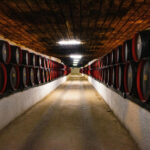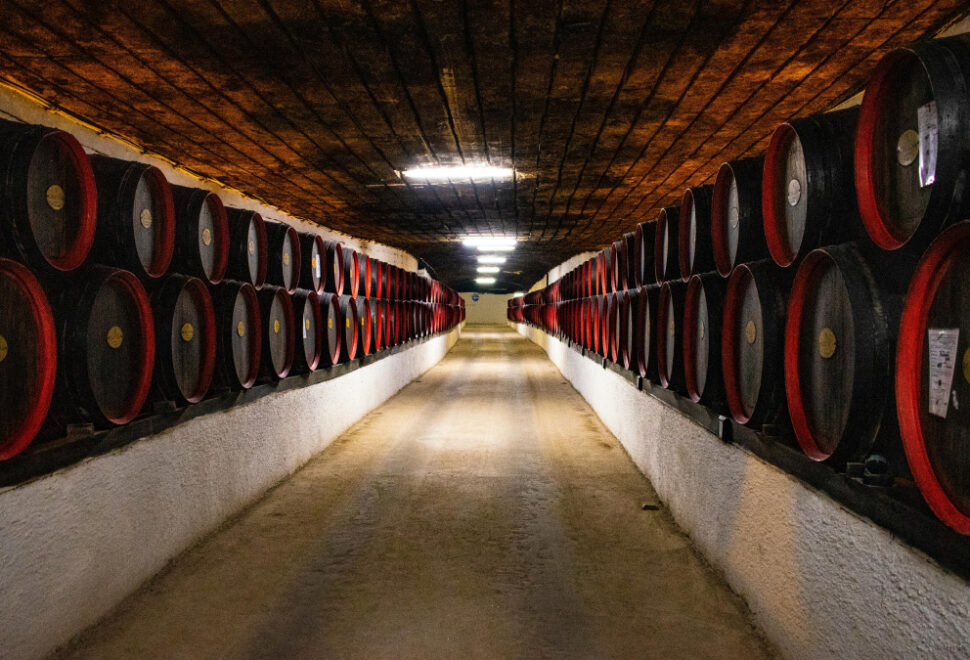
THE ROMANESQUE ROUTE (II): THE COURSE OF THE RIVER OJA
17 December, 2024WINETOURISM
THE ROMANESQUE ROUTE (I): THE OBARENES MOUNTAINS AND THE RIVER TIRóN
The Obarenes Mountains are the final and most southerly foothills of the Cantabrian Mountains. From the Conchas de Haro (the Ebro) until well into the province of Burgos, they protect the vineyards of the western Rioja Alta area and, in addition to wineries and farmland, we can find marvellous examples of Romanesque art, some of them being the most important and best preserved of the region. The Obarenes Mountains have formed a natural defensive border against northward attacks and the region was fought over by Christians and Muslims for two centuries.
The line of castles at Treviana, Pancorbo, Murriel, Cellorigo and Bilibio enabled the repopulation of the region through what were known as ecclesiastical lands, in other words, monastic foundations for the farming of a town, with ten monks sent by a dean, which is why numerous references can be found to vine and cereal growing, among others, as the means of livelihood of the population. There are no end of possibilities for establishing routes and, for true art lovers, the best option is perhaps to head to Treviana, which is where the Romanesque Interpretation Centre is, and from where different routes begin, ensuring that you do not miss a single detail of this monumental Rioja composed of stone and history.
In our case, we suggest a route that goes from Haro to the town of Cihuri following the recommendation of the La Rioja Tourist board. There we discover a Roman bridge that was rebuilt in the Middle Ages. Then we explore Tirgo, with its beautiful church of El Salvador, where it is possible to identify the most characteristic architectural elements of Romanesque Rioja: the triumphal arch, barrel and quarter sphere vaults and semi-circular windows.
Although several of its historical sites are more recent than Romanesque times, visiting Casalarreina is a must. It has an extraordinary monumental heritage, which led to it being declared a Site of Historic and Artistic Interest in 1975. During the mediaeval centuries, its name was Naharruri or Nafarruri and it appears that its current name was adopted following Joanna I (the ‘Mad’ Queen) of Castile’s stay at the Constable’s Palace in this town, back in 1511. Historically, Casalarreina belonged to the Monastery of Cañas and subsequently to Haro, permanently dissolving its connection to the town in 1671. The most important monuments in Casalarreina are the Dominican Convent of Mercy, the parish church of Saint Martin, the complex of palaces of the nobility (Constable’s Palace, Palace of Pobes and Palace of the Marquis del Puerto), along with the Romanesque chapel of San Román de Ajugarte.
Cuzcurrita has preserved Velasco Castle in perfect condition along with its town centre with other buildings featuring ashlar masonry and coats of arms. The chance to walk along the banks of the river Tirón should not be missed, particularly in summer in order to cool off and enjoy the natural surroundings.
From there, we head to Ochánduri, with the beautiful belfry of the Legarda chapel and the parish church as the main places of interest. We take the path towards the Obarenes Mountains and we reach Treviana, with its aforementioned Romanesque Interpretation Centre, the Concepción ruins and the spires of the chapel of Our Lady of Jonquera as the main destinations. In the surrounding area, there are also other important sites from the Romanesque period such as the semi-circular apse of the Church of Saint Martin in Fonzaleche and the remains of the Romanesque church of Arcefoncea in Foncea. An essential stop, in the middle of the Obarenes, is Cellórigo, with an extraordinary vantage point with views over the vineyards and farmland and a backdrop of the Sierra de la Demanda, one of the most photographed places in the region. In Galbárruli, we find Saint Stephen’s Church (late-Romanesque from the twelfth and thirteenth centuries), whilst in Villaseca and Castilseco we can admire churches with beautiful corbels and spires.
Finally, we visit Sajazarra. Declared one of the most beautiful villages in Spain, it has a maze of streets containing extraordinarily well-preserved stone houses, mansions, palaces and cute little squares. The impressive fairytale castle, owned by the Líbano family (Bodegas Castillo de Sajazarra), the late-Romanesque church of the Assumption and the chapel of Saint Mary of Cillas will leave us speechless.
Bodegas Familiares de Rioja on the route
Bohedal Bodega Boutique (Cuzcurrita): Specialised in enotourism, with numerous offers, Bohedal Experiences, for families (including children). The Baños Bezares family personally takes care of all visits.
Bodegas Tobía (Cuzcurrita): Runs winery and vineyard visits and wine tasting courses booked in advance. Open from Monday to Saturday. Enquire about Sundays and public holidays.
Hacienda El Ternero (Miranda de Ebro): a Burgos enclave in La Rioja territory. Impressive vineyards in the Obarenes Mountains. Wild nature in one of the most spectacular landscapes of La Rioja with winery and vineyard visits (even on a Segway).
Castillo de Sajazarra (Sajazarra): Winery at the foot of the impressive castle owned by the Líbano family. The castle cannot be visited, but you can visit the winery set in idyllic gardens by the river Ea, by booking in advance, from Monday to Friday.
Fincas la Emperatriz (Baños de Rioja): at the south of this route, by the river Oja, in the small village of Baños de Rioja, we find Bodegas Finca la Emperatriz. A beautiful and historic vineyard which belonged to the Empress Eugenia de Montijo and features a comprehensive enotourism offering.


